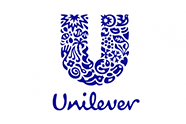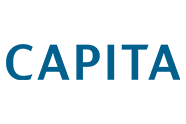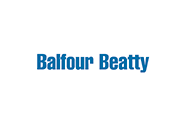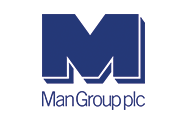Pillar 3
1. BACKGROUND
1.1 Introduction
The EU’s Capital Requirements Directive (‘CRD III, which came into effect on 1 January 2007’) introduced consistent capital adequacy requirements for authorised credit institutions and investment firms, based on Basel II accord. The European Union implemented the Basel III proposals of 2010 through the Capital Requirements Regulation (“CRR”) and Capital Requirements Directive (together referred to as “CRD IV”) which came in January 2014, but WillU Ltd benefits from the Financial Conduct Authority (“FCA”) Capital Requirements Regulation derogation allowing it to use the CRDIII rules.
As such the following disclosures are in accordance with Chapter 11 of the Prudential Sourcebook for Banks, Building Societies and Investment Firms (BIPRU) section of the FCA Handbook.
The Basel framework consists of three pillars:
- Pillar 1 – sets out the minimum capital requirement to meet a firm’s credit, market and operational risk.
- Pillar 2 – requires a firm to undertake an Internal Capital Adequacy Assessment Process (‘ICAAP’) to establish whether its Pillar 1 capital is adequate to cover all the risks faced by the firm and, if not, to calculate the additional capital required.
- Pillar 3 – requires a firm to disclose specific information concerning its risk management policies and procedures and its regulatory capital position.
BIPRU 11 sets out the provisions governing Pillar 3 Disclosures. This report contains all the disclosures required under BIPRU 11 unless a particular disclosure is not applicable, regarded as not material, or is proprietary or confidential information.
1.2 Frequency of Disclosure
WillU Ltd will make Pillar 3 disclosures on an annual basis, as soon as reasonably practicable following completion of its annual financial statements. However, WillU Ltd will update its Pillar 3 disclosure more frequently than annually if material changes to its business model have occurred that would affect the calculations of its regulatory capital requirement.
1.3 Location and Verification of Disclosure
Disclosures are verified and approved by the Board prior to being published on the WillU Ltd website.
2. SCOPE & APPLICATION
2.1 Business Overview
WillU Ltd is a BIPRU firm authorised and regulated in the UK by the Financial Conduct Authority (FCA).
WillU Ltd acts as an execution and advisory broker on an agency basis. It does not trade for its own account and accordingly carries no trading book exposure. The firm’s services are offered to Eligible Counterparties, Per Se and Elective Professional Clients and Retail Clients as defined by the EU Markets in Financial Instruments Directive (MiFID).
2.2 Solo Basis of Disclosure
WillU Ltd is a stand alone entity and the disclosures within this report are made on an individual basis.
3. RISK MANAGEMENT GOVERNANCE STRUCTURE
3.1 Introduction
Risk management is embedded throughout WillU Ltd, with the overall risk appetite and risk management strategy being approved by the Board and then disseminated throughout the business as appropriate.
3.2 The Board
The Board is responsible for setting WillU Ltd’s risk appetite, ensuring that it has an appropriate and effective risk management framework, and for monitoring the ongoing process for identifying, evaluating, managing and reporting the significant risks faced by the firm.
3.3 Risk Management Framework
WillU Ltd’s Risk Management Framework identifies risks within four risk categories: (1) Market Risk; (2) Credit Risk; (3) Operational Risk; and (4) Business Risk. The risks within each area are analysed, mitigating factors assessed and relevant controls identified. The risks within each category are rated according to their potential impact and probability and assigned a risk rating. Action is taken by the Board to manage the key risks, as appropriate, to safeguard WillU Ltd and its clients. The Risk Management Framework is regularly updated and is reviewed at least annually by the Board, with particular focus on those risks rated ‘High’. The Risk Management Framework is used to identify the risks to be considered in the Internal Capital Adequacy Assessment Process (‘ICAAP’).
3.4 Compliance
The Compliance Oversight Function monitors for compliance by WillU Ltd with the various regulatory requirements to which the firm is subject, including those imposed by the UK regulatory regime. The Compliance Oversight Officer reports directly into the Chief Executive Officer.
3.5 Internal Audit
Due to the nature, scale and complexity of its business, WillU Ltd does not have a dedicated Internal Audit Function, but has delegated much of the task of monitoring the appropriateness and effectiveness of its systems and controls to the Compliance Oversight Function.
4. PRINCIPAL BUSINESS RISKS
4.1 Market Risk:
In trading on an agency on behalf of clients the company does not trade for its own account and market risk will be limited to adverse market movements on client positions requiring close-out following the failure of a client or market counterparty. WillU Ltd is not materially exposed to foreign exchange or interest rate risk.
4.2 Credit Risk:
Credit Risk is the risk that a firm’s clients and counterparties fail to pay monies due to the company. WillU Ltd’s main exposure to credit risk is in respect of its underlying clients. Client orders are potentially subject to delivery failure which may result in forced close-out in the market that can result in losses which have to be recovered from such clients. The firm has established controls to minimise loss. WillU Ltd faces credit risk from banks and prime brokers where deposits and other balances are held. WillU Ltd minimises this risk by only using top tier banks to hold its funds.
4.3 Operational Risk:
Operational risk is the risk of loss resulting from inadequate or failed internal processes, people and systems, or from external events. As such, operational risk spans a wide and diverse range of potential risks, including: loss of key staff; IT system failures; loss of data; telecommunications failures; loss of power supply; failure or disruption of a critical business process; disaster occurrences, natural or otherwise. The principal risk concerns failure to execute a client order in accordance with their instructions. Operational risks are identified, mitigated and/or managed at WillU Ltd by senior individuals who are alert to the risks faced by the area of the business they are responsible for e.g. Trading, Operations, Finance, Compliance, etc.
4.4 Business Risk:
WillU Ltd operates in an environment characterised by strong competition, ongoing technological change and a continually evolving regulatory framework. Failure to adapt to changing market dynamics, customer requirements, or the way markets and their participants are regulated constitutes a significant long-term risk. WillU Ltd’s main strategy for managing and mitigating these risks is through the continued development of active management of client relationships (Craig/Ross please add further commentary as appropriate) and by keeping abreast of all relevant regulatory reforms.
5. CAPITAL ADEQUACY
WillU Ltd has a regulatory obligation to ensure that it maintains overall financial resources, including both capital resources and liquidity resources, which are adequate both as to the amount and quality, to ensure there is no significant risk that its liabilities cannot be met as they fall due.
5.1 Internal Capital Adequacy Assessment Process (ICAAP)
The ICAAP formally records the assessment as to whether a firm’s capital and liquidity resources are sufficient to cover the risks identified in the Risk Management Framework. WillU Ltd’s ICAAP is updated and formally approved by the Board on at least an annual basis.
6. CAPITAL MANAGEMENT
The firm’s capital management objectives are to: (1) to ensure WillU Ltd continues operating as a going concern, and (2) meets its regulatory capital requirements at all times. These objectives are primarily met by managing the risks that WillU Ltd faces on a regular basis.
7. CAPITAL RESOURCES
The capital resources of WillU Ltd as at 10th April 2017 are as follows:
Tier 1 Capital Resources are £99,000
The firm’s variable capital requirement at that date was £18,000 and its base capital requirement £44,000. The firm’s capital ratio was therefore 225%, and its excess own funds over its Pillar 1 capital requirement was £55,000.
8. REMUNERATION
Due to the nature, scale and complexity of its business, WillU Ltd has not formally appointed a Remuneration Committee. However, all decisions concerning remuneration are taken by the Board. As a BIPRU firm WillU Ltd is a level three firm for remuneration code purposes.
8.1 Code Staff:
The only Code Staff are the firm’s directors.
8.2 Aggregate Remuneration
The firm received its Part IV permission on 10th April 2017 and the firm will therefore provide remuneration information for the period ended 31st December 2018 and will be updated in April 2019.






































































































































